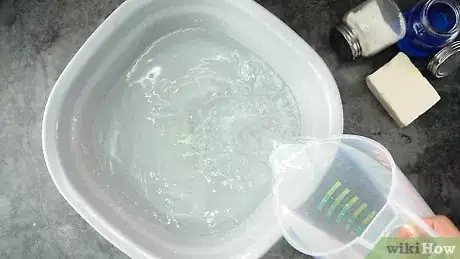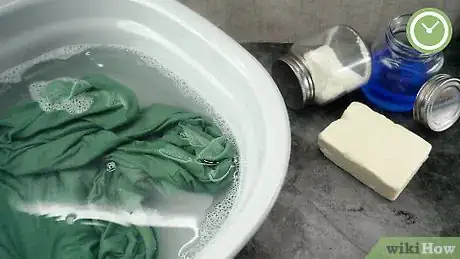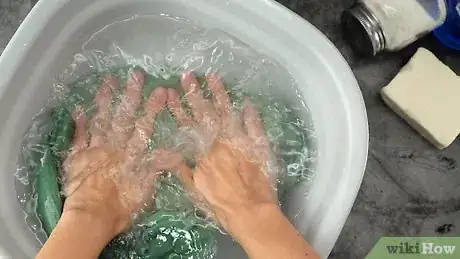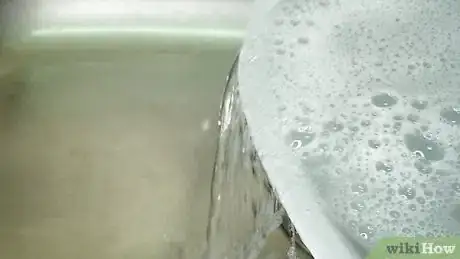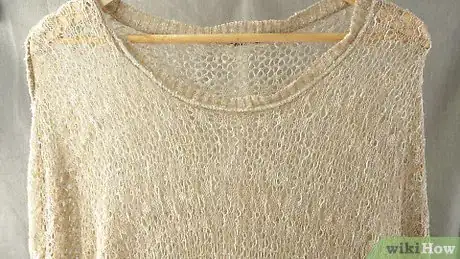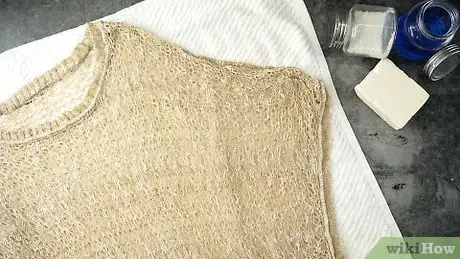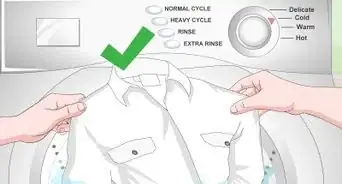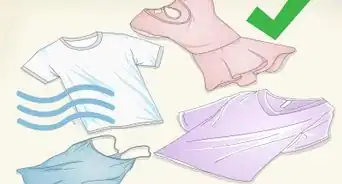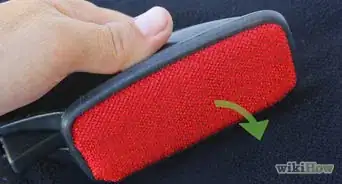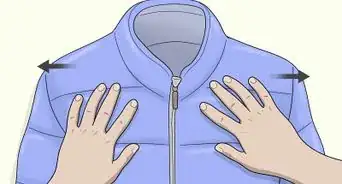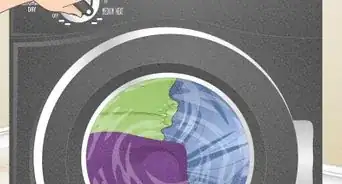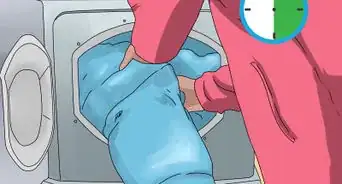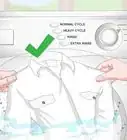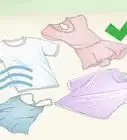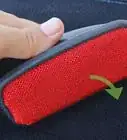This article was co-authored by Susan Stocker. Susan Stocker runs and owns Susan’s Green Cleaning, the #1 Green Cleaning Company in Seattle. She is well known in the region for outstanding customer service protocols — winning the 2017 Better Business Torch Award for Ethics & Integrity —and her energetic support of green cleaning practices.
This article has been viewed 29,185 times.
Whether you’re hoping to cut down on dry-cleaning costs, avoid trips to the laundromat, or take better care of delicate items, you can easily hand-wash numerous types of shirts at home. Cotton dress shirts, knit tops, delicate blouses, and wool sweaters can be hand washed in a small sink or basin with just a splash of laundry detergent. Soak them in soapy water first, then follow up with a few rinses. Squeeze out the water before air-drying your shirt and it’ll be back in your wardrobe in no time.
Steps
Expert Q&A
-
QuestionIs hand washing clothes effective?
 Susan StockerSusan Stocker runs and owns Susan’s Green Cleaning, the #1 Green Cleaning Company in Seattle. She is well known in the region for outstanding customer service protocols — winning the 2017 Better Business Torch Award for Ethics & Integrity —and her energetic support of green cleaning practices.
Susan StockerSusan Stocker runs and owns Susan’s Green Cleaning, the #1 Green Cleaning Company in Seattle. She is well known in the region for outstanding customer service protocols — winning the 2017 Better Business Torch Award for Ethics & Integrity —and her energetic support of green cleaning practices.
Green Cleaning Expert It absolutely is effective and is great for washing delicate pieces. Just make sure the sink stopper is set before you put the clothes in, though, or they could catch on the stopper and rip.
It absolutely is effective and is great for washing delicate pieces. Just make sure the sink stopper is set before you put the clothes in, though, or they could catch on the stopper and rip. -
QuestionHow do you get old armpit stains out of shirts?
 Susan StockerSusan Stocker runs and owns Susan’s Green Cleaning, the #1 Green Cleaning Company in Seattle. She is well known in the region for outstanding customer service protocols — winning the 2017 Better Business Torch Award for Ethics & Integrity —and her energetic support of green cleaning practices.
Susan StockerSusan Stocker runs and owns Susan’s Green Cleaning, the #1 Green Cleaning Company in Seattle. She is well known in the region for outstanding customer service protocols — winning the 2017 Better Business Torch Award for Ethics & Integrity —and her energetic support of green cleaning practices.
Green Cleaning Expert Lemon juice works wonders! Mix equal parts lemon juice and warm water and scrub until the stain disappears. You can also try a baking soda and water paste.
Lemon juice works wonders! Mix equal parts lemon juice and warm water and scrub until the stain disappears. You can also try a baking soda and water paste.
References
- ↑ https://morningchores.com/how-to-hand-wash-clothes/
- ↑ https://www.esquire.com/style/mens-fashion/news/a52671/wash-dress-shirts-at-home/
- ↑ https://www.racked.com/2015/9/11/9282659/forget-dry-cleaning-learn-to-hand-wash-your-clothes
- ↑ https://www.gq.com/story/cleaning-white-tees-pit-stains-john-mayer
- ↑ https://www.bhg.com/homekeeping/laundry-linens/clothes/how-to-wash-clothes-by-hand/
- ↑ https://www.esquire.com/style/mens-fashion/advice/a41064/ring-around-the-shirt-collar/
- ↑ https://www.bhg.com/homekeeping/laundry-linens/clothes/how-to-wash-clothes-by-hand/
- ↑ https://www.racked.com/2015/9/11/9282659/forget-dry-cleaning-learn-to-hand-wash-your-clothes
- ↑ https://www.esquire.com/style/mens-fashion/advice/a41064/ring-around-the-shirt-collar/
- ↑ https://www.racked.com/2015/9/11/9282659/forget-dry-cleaning-learn-to-hand-wash-your-clothes
- ↑ https://www.bhg.com/homekeeping/laundry-linens/clothes/how-to-wash-clothes-by-hand/
- ↑ https://www.racked.com/2015/9/11/9282659/forget-dry-cleaning-learn-to-hand-wash-your-clothes
- ↑ https://www.racked.com/2015/9/11/9282659/forget-dry-cleaning-learn-to-hand-wash-your-clothes
- ↑ https://www.gq.com/story/cleaning-white-tees-pit-stains-john-mayer
- ↑ https://www.esquire.com/style/mens-fashion/news/a52671/wash-dress-shirts-at-home/
- ↑ https://morningchores.com/how-to-hand-wash-clothes/
- ↑ https://www.esquire.com/style/mens-fashion/news/a52671/wash-dress-shirts-at-home/
- ↑ https://www.gq.com/story/cleaning-white-tees-pit-stains-john-mayer
- ↑ https://www.bhg.com/homekeeping/laundry-linens/clothes/how-to-wash-clothes-by-hand/
- ↑ https://www.bhg.com/homekeeping/laundry-linens/clothes/how-to-wash-clothes-by-hand/
